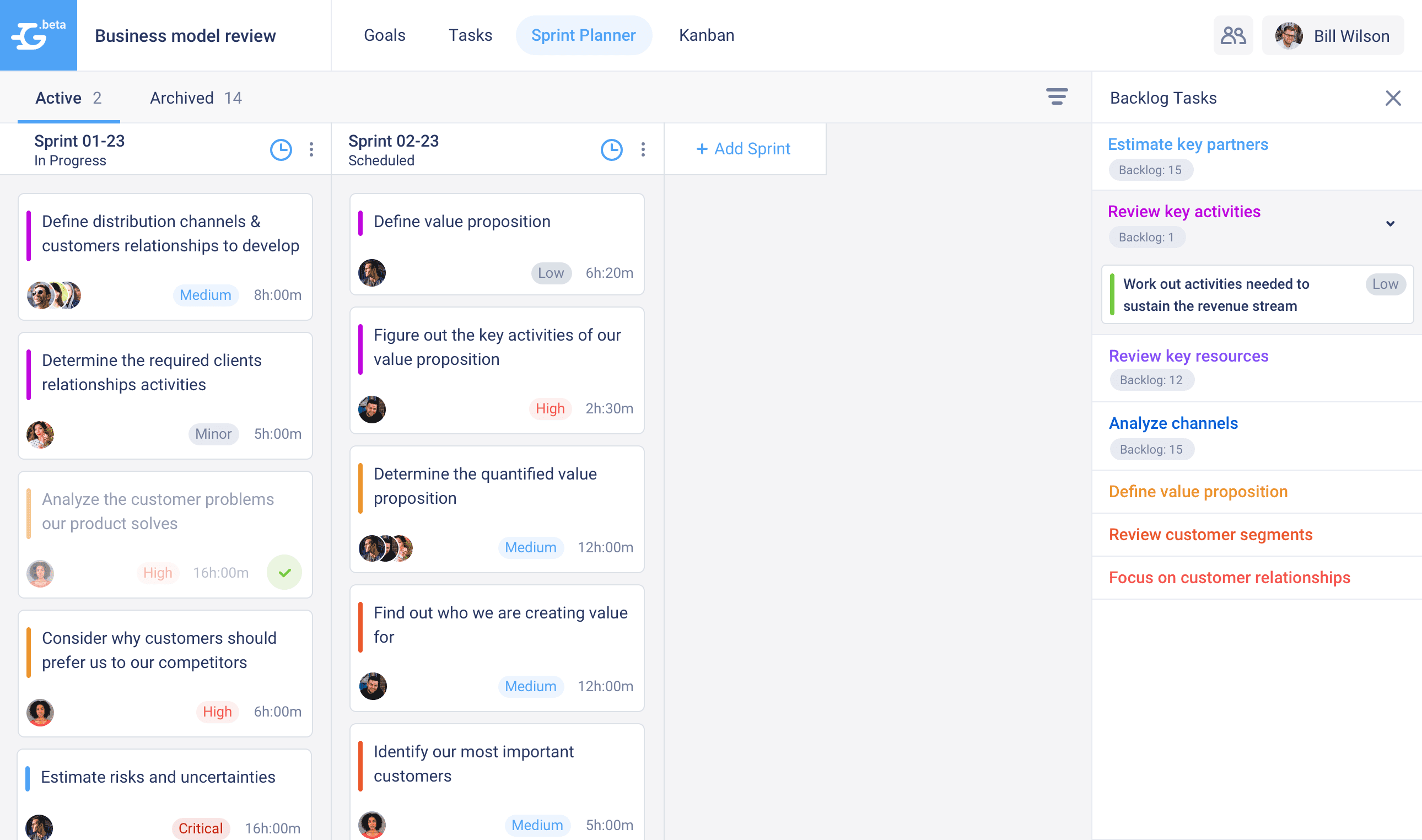As a PM, you must’ve at least heard about agile project management. If you’ve already dipped one toe in, you may even think that the PM’s role is senseless in the agile context. The top management or your clients want to get the product with the best quality on time and budget. However, their requirements change every week or even every day. And how are you supposed to stay productive in such circumstances?
If this situation sounds familiar, you are in the right place. The Goals team is here to help you. Lots of IT product companies have already chosen the agile approach over the unforgiving waterfall project management. Why? Agile project management is one of the best approaches for PMs that allows to reach key milestones, achieve goals, and provide the decision-makers with the most up-to-date info on the project status. Thanks to having the big picture and ongoing feedback via the agile methodology, PMs can easily adapt to any changes and manage the software development better and faster.
So, what is agile project management? Why use agile project management? How does agile project management work? Let’s check it out!
What is meant by agile project management?
The definition of agile management says that it is an iterative approach to business planning and managing project processes. This methodology starts with clients describing what product they want, how it should be used, and what problem it should solve. The agile project approach focuses on your clients’ expectation, constantly repeated micro-releases, and ongoing feedback from your customers or stakeholders at the end of every cycle. As a result, this methodology makes your production rapid and allows to constantly revise it if necessary.
An agile project is divided into small cycles that are called iterations. Such an iteration refers to a single development section. Each cycle has to be analyzed and criticized by your team so that you could use insights from this critique in the next cycles. Continuous collaboration is your key to successful implementation of agile project management to make fully-informed decisions.

Why use agile project management?
Many years of experience of using agile project management make different companies insist on the following benefits of implementing this methodology in your business:
- Detect problems timely
- Make necessary changes rapidly
- Deliver your project within budget
- Empower your team
- Build accountability
- Encourage diversity of ideas
- Promote continuous improvement
- Focus on what is most beneficial
- Use resources effectively
- Increase collaboration with workers
What is an agile methodology in project management?
The basics of this methodology were developed in now-far 2001 in the form of the written Agile Manifesto of Software Development. It was created by 17 people and it is still relevant today.

Agile project management is traditionally categorized into 2 frameworks. These frameworks are called Scrum and kanban. The first framework focuses on project iterations, and the second one, in turn, focuses on continuous releases.
What is agile Scrum framework?
In a nutshell, Scrum is a framework that is based on sprints. Sprints, in turn, are fixed-length iterations of work. Scrum includes 4 key meetings (or ceremonies) that help to structure each sprint:
- Sprint planning. This is a meeting of your whole team that is organized to plan works in the next sprint.
- Sprint Demo. This is a meeting with your stakeholders or clients where your team presents the results of the work in the previous sprint.
- Daily Standup. This kind of meetings is a 15-minute daily gathering of your team to stay on the same page regarding product development.
- Retrospective. This is a kind of meeting that is conducted to analyze your team’s results and decide how to improve the work in the next sprint.
In order to effectively manage the completion of the works during each sprint, you should use a tool for agile project management like Goals by KeepSolid. Such feature-rich service will help you to generate sprints, form scopes, and add backlogs to the needed sprints. Using a goal-oriented tool for agile project management, PM should start each sprint with a backlog or idea of works that should be done during the sprint. There should be a prioritized list of features that you want to be implemented in your product in a particular sprint, and the related tasks.
This is what sprints look like in the Goals by KeepSolid app:

What is kanban in agile methodology?
Kanban is another agile framework that visualizes your team’s tasks in a particular sprint. Kanban is usually created in the form of sticky notes on whiteboards or special boards via online tools for agile project management like Goals by KeepSolid. According to this framework, you should structure your board into three basic columns (To Do, Doing, Done) and add the auxiliary columns (Deploy, Research, Testing, etc.) if necessary. Such columns will help you to track the progress of your team.
Kanban boards allow you to focus on the most important tasks that should be done right now and, at the same time, not to lose sight of the big picture of your current sprint. Goals by KeepSolid allows you to fill your kanban board with the needed tasks that will bring your team and software development to your end Goal. Track the completion of your tasks in real-time, and move on to the next one once a task is completed.




